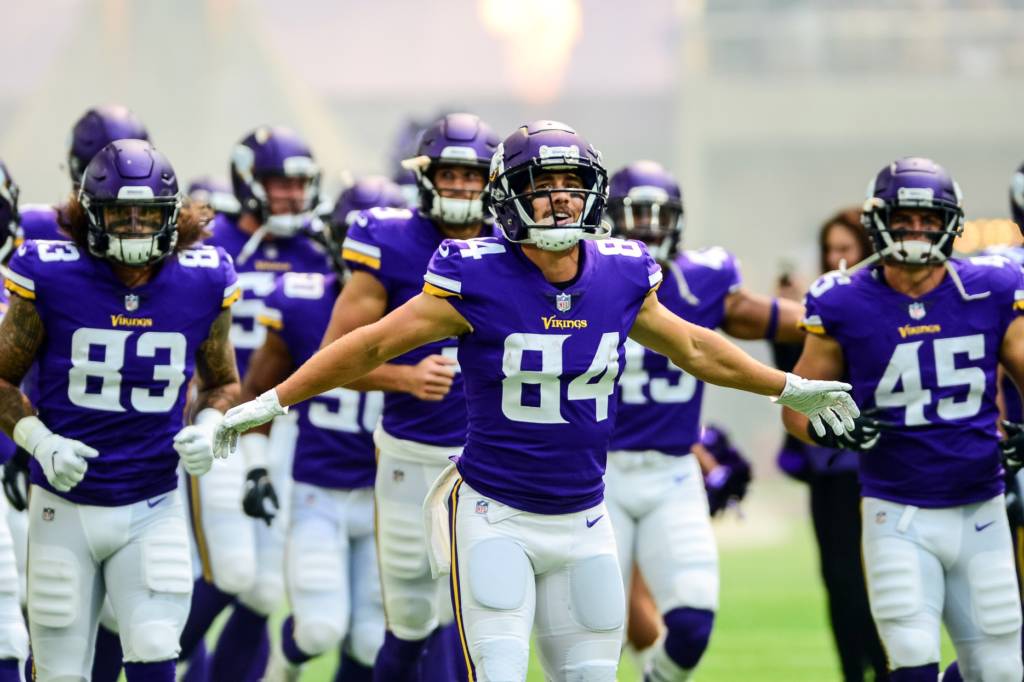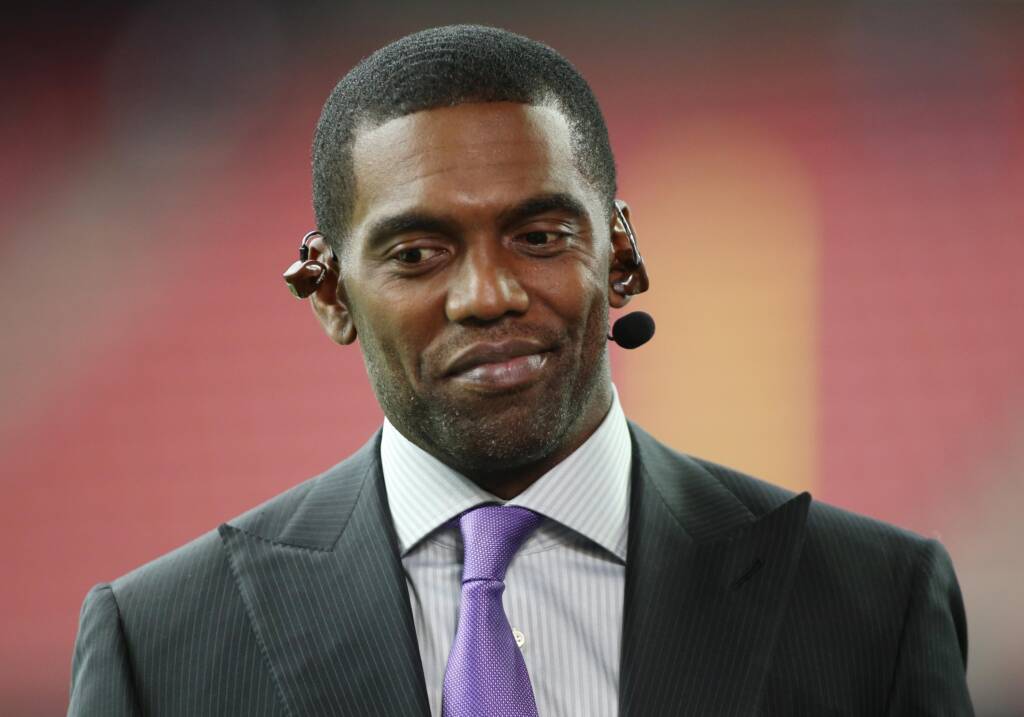It appears as if the NFL is shortening its preseason — a move that pundits have requested for many years. Ironically, it took a pandemic to make it happen.
Now the question becomes: Will there be any negative consequences?
ESPN’s Kevin Seifert reported that the league will eliminate the first and fourth windows for preseason games, leaving teams with two exhibitions where their second and third games would’ve ordinarily been played. The primary driver of the decision is a “larger acclimatization plan” since teams weren’t able to hold spring practices due to COVID-19.
As for the Vikings, their middle two preseason games were scheduled to be on the road — at Cincinnati in Week 2 and at Cleveland in Week 3 — but Seifert wrote that the NFL will alter matchups to ensure teams get one home game and one road game.
While the quality of NFL preseason play has long been criticized — just watch how broadcast partners begin tuning out the action in the second half — the roster building process will change with only half the on-field snaps to dole out. The loss of games could also signal the first financial losses for the league in a lean year that is projected to lower the salary cap.
Let’s examine some of these notable ripple effects:
Preseason Money is Still Money
There’s been no definite reporting on what type of financial loss will result from the subtraction of two preseason games. But it stands to reason networks and teams will suffer.
For all the guffawing at the expense of sloppy preseason games, millions of fans still watched national preseason broadcasts, and many local broadcasts are a source of revenue for teams because they are produced in-house.
Indications are that individual teams will be able to dictate their attendance policies based on state guidelines, meaning some stadiums will likely have at least partial attendance. A lost home game, even in preseason, means up to millions of dollars lost at the gate and through concession sales. Season ticket holders typically get the cost of preseason tickets baked into their payment, so refunds could be in order to those folks, who would lose out on 10% of the season schedule.
Plus, with one game out of 10 wiped out, corporate sponsors with advertising within the stadium may end up reworking their agreements with the team.
Wednesday’s decision may seem minor, but there is real financial impact. Unfortunately for owners, it could end up being a drop in the bucket when compared to their losses throughout the regular season.
Player Development Detriments And Benefits
The tradeoff for losing two preseason games is that teams now get additional training camp practices to put in work that is safer and more structured. Clubs usually took off the day before and the day after preseason games, which could translate to six additional practices to fill the void of two preseason contests. (And if, by chance, fans are allowed to watch training camp practices, those tickets sales could help compensate for the lost home game, but that scenario seems unlikely.)
While fans love the players that splash in the preseason, coaches are equally, if not more, concerned with their ability to line up correctly and play with the proper technique. In-game playmaking has a part in the evaluation process, but it’s far from the last word. Kyle Sloter had incredible results in preseason games but struggled to perform consistently in practice and never gained favor with the coaching staff.
There are, however, some skills that players can’t hone in practice. Tackling, for instance, is strictly forbidden in training camp unless its against a dummy. Getting game film allows coaches to correct poor leverage and technique, and four games’ worth of reps can be enough to show improvement. Two games may not present enough opportunities.
Sometimes even experienced players forget their instructions in a game setting when confronted with nerves and the randomness of live reps. Jaleel Johnson and Jalyn Holmes took hundreds of reps as the starting defensive tackle pairing to begin last preseason, only to forget where they were supposed to line up in the opening game at New Orleans. “When they first went out there they were both far off the ball, which is kind of mind blowing,” Zimmer said at the time. “They’ve been out here for however many practices. Jalyn was lining up too head up on the guard that he was on, and Jaleel was too far back.”
Fortunately for the Vikings, their specialists are sorted out for the upcoming season with Dan Bailey, Britton Colquitt and Austin Cutting as their established battery. But teams with kicking or punting battles usually rely heavily on game reps to decide those competitions. When the Vikings traded for Kaare Vedvik last preseason, he appeared to be the clear leader after shining in practice, but Vedvik went 1 for 4 on field goals in the final two preseason games and ceded the competition to Bailey.
Game reps still have value. The sloppiness of play that fans rip on Twitter has a purpose — it means somebody isn’t performing well, and that can inform coaches on who needs more help.
On the positive side, preseason injuries will surely go down with half the games. The Vikings’ offensive line has often been decimated in the preseason, notably losing starting linemen Phil Loadholt and Nick Easton to season-ending injuries. Tackles Riley Reiff and Brian O’Neill have also missed preseason time in recent years. While injuries can still happen in practice, players won’t be forced to practice through pain as much with two fewer games to wear down their bodies.
How Much Do the Starters Play?
Teams will now be confronted with how much playing time to allot their starters. Some clubs like the Chicago Bears have pivoted in recent years to holding their starters out for much or all of the preseason. The Vikings, on the other hand, have continued to get reps for their top players like Kirk Cousins, who threw 25 passes over three different preseason games last year.
Starters typically play the most in Weeks 2 and 3 of the preseason with Weeks 1 and 4 reserved largely for the backups. It’s unlikely all teams will operate with the same mindset, so there could end up being some mismatches if one club opts to play a starting defense against a backup offense. Opposing coaches may have to communicate and compromise during the week so they aren’t putting backups in harm’s way.
Odds are teams will lean on development. It’s hard to imagine any coach playing their starters into the second half with so many rostered rookies that didn’t get the benefit of OTAs or mini-camps. The Vikings have 27 rookies presently on the roster, several of whom may be expected to contribute Week 1.
But all of those rookies may not be in position to look good in games, since most will be equally raw and often playing together at the same time. Vikings rookie receiver Justin Jefferson might have a better chance of succeeding with Cousins at the helm than Sean Mannion or Jake Browning. Jeff Gladney may not look as good without Harrison Smith behind him and Mike Hughes to his inside. The film will not be kind to rookies getting an unprecedented NFL crash course, which puts even more weight on the extended practice time now being offered.
There’s no blueprint for how to handle these circumstances, so teams that handle this curveball smartly may have an advantage going into the season.

